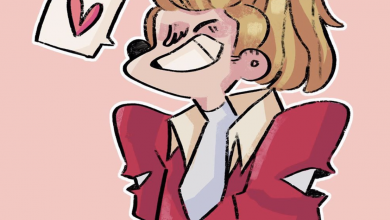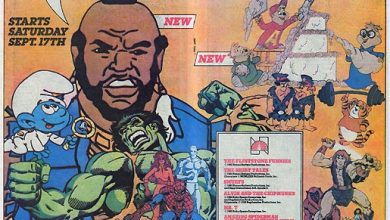Fun Apps for Toddlers with Fine Motor Disabilities (Android)

My toddlers are nearing three and get limited screen time (per the AAP). I try to ensure that time is spent interacting with technology in the form of quality learning apps and engaging games. However, their fine motor delays narrow the list of apps they can use successfully significantly.
Fine motor delays make it difficult to complete delicate tasks. Their occupational therapist breaks these tasks down into small parts so that they can master each part before tackling the entire task.
For example, swiping a finger across a touchscreen requires extending a single finger and holding it steady, applying the correct downward force, moving the finger from the initial point to the target, maintaining the same pressure across the swipe, maintaining the pace of the swipe, and lifting the finger at the target. These are difficult for them individually, and impossible when combined.
There are only a few apps that work for toddlers with fine motor disabilities and are age-appropriate cognitively. Most of the apps at my kids cognitive level assume that users are at a stage of physical development where they can interact with the screen by swiping it.
I am not a developer, but in my perfect world, apps would come with an option that lets users tap an object and then tap the destination instead of requiring a swipe, or that let users increase the target size and or slow down the movement on screen. Using the device’s accessibility settings is awkward and doesn’t meet all these criteria.
So, I downloaded a ton of apps, and kept the ones that:
- Are not rife with constant motion/lights/explosions/etc
- Are free or have a “lite” version because I don’t know if it’ll work out until I try it, and reviews that rave about games for special needs children often miss the whole “can’t swipe” thing.
- Are not just extended advertisements for characters and brands
- Are cognitively appropriate for 2-4 year olds, but also allow the child to progress through activities and games by touching/tapping the screen rather than swiping.
- Are not specifically therapeutic in nature.
Below are the apps that made the cut for Android devices (some have iTunes equivalents). All are free versions with upgrade and in-app purchase options.
 Kids Balloon Pop Game Free by AppFamily:
Kids Balloon Pop Game Free by AppFamily:
What it is: The user pops balloons and the app says the number or letter on the balloon.
Why it Works: the interface is simple – balloons float against the sky (or against black if you choose high contrast). Most importantly, you can slow the balloons and increase their size in the settings to make it less frustrating for kids who cannot tap quickly or accurately.
What doesn’t work: The only drawback is that it’s not particularly challenging academically. I make it work by having them say the number or letter out loud and use the app to check their accuracy.
 Mathematics and Numbers Kids by WhisperArts
Mathematics and Numbers Kids by WhisperArts
What it is: This is made up of two games: Draw Numbers, and Counting. In Counting, the screen shows a number and a colored page with un-colored images of as many animals as the number indicates; touch the animals to color them in (while counting); It’s the most simple app in this list.
Why it works: Settings let you mute sounds in lessons or games. The play is simpler than the screenshots at the store indicate. The counting game is touch only, and nice for kids learning to count. The Draw numbers game requires swiping, but not accuracy. As long as the user colors a percentage of the number shown, it says “excellent!” and moves along. It doesn’t matter if the entire screen is colored in.
What doesn’t work: The “Draw Numbers” game is easiest when swiping.
 Kids Learn to Read Lite by Intellijoy:
Kids Learn to Read Lite by Intellijoy:
What it is: In the first game, the child can choose a walking stick, tennis shoes or skateboard to send a turtle across a row of letters that form a word at an increasingly fast paste and hear the letters blend into the word. It’s perfect for kids fascinated with letter sounds.
Why it works: I like the simplicity of the first game. This game is entirely playable by tapping the screen at any pace.
What doesn’t work: The second game is not playable by children with fine motor skill delays and disabilities because it is drag and drop.
 Connect the Dots: Counting Skills Lite by Intellijoy
Connect the Dots: Counting Skills Lite by Intellijoy
What it is: Connect the dots in order to make a shape. Once you’ve made the shape, it fills in with an image. If you do not touch a dot quickly, it will pulse to alert you to touch it.
What works: This is completely do-able if you can’t swipe, has a simple layout, quiet music; and is great for toddlers counting past 10 (first puzzle goes to 23)
What doesn’t work: The dots are VERY small and you have to be accurate to use them
 Kids Learn Shapes (Preschool) by Intellijoy:
Kids Learn Shapes (Preschool) by Intellijoy:
What it is: Learn the shapes on a cube and identify them by touching real objects.
Why it works: Kids get medals for each shape they identify in three different settings. The voice is calm. The game uses photographed objects rather than cartoons, which makes it a fun extension of any real-life shape finding they’re doing. Users touch the image to identify it in the game; in learn mode, users can swipe the cube to rotate it or just touch the right arrow to do the same thing.
 Toddler Preschool Activities by Active Panda:
Toddler Preschool Activities by Active Panda:
What it is: In a series of short simple activities, a panda walks through different scenes, and users touch what it tells them to touch to learn numbers, letters, place order, body parts and more. Addictive and relentlessly positive, this is less a game as a rolling lesson
What works: This is all touch, and gameplay is quick but users have unlimited time to play each level; it is my children’s favorite by far.
What doesn’t: it’s not academically challenging, and doesn’t promote depth of learning.
 PlayKids by Play Kids
PlayKids by Play Kids
What it is: This app has videos and a ton of games for a lite app. We only play the games, which vary from memory to music.
What works: Games can be played as slowly as needed. Connect the Stars lets users tap small stars to create constellations, Matching Game tests memory with 4 cards but the number of cards is easily increased as kids get better, the Coloring Book game is playable through only touch, which is unusual; Piano is just fun and has many options that are all accessible through touch only.
What doesn’t: This app is huge and takes forever to load initially; the room clean up game is swipe only. Connect the Stars is unforgiving with small targets, and the puzzle game only works with swiping motions.
What’s odd: I downloaded three Play Kids apps (PK Preschool, PK, and PK Lullabies), and once you got past the first screen they were identical.
The Rest
Below, I’ve listed some of the most popular Google Play learning apps for the Under 5 Set as of summer 2015 that I deleted and why.
- ABC Mouse – This isn’t an app. It’s just an advertisement.
- Animal Hair Salon – Almost all swiping
- Barbie and Disney Princess apps – Mostly swiping, too chaotic, basically an advertisement for Barbie.
- Cutie Patootie Welcome to the Neighborhood – Though it teaches daily living skills, it is all swiping.
- Kids Game: Baby Phone – This is for very young users, and the audio in play mode is going to haunt me for years.
- LEGO apps – All the lego games require swiping. The Duplo one is the most forgiving for those who have limited swiping ability
- Peppa’s Paintbox – Technically you can play without swiping, though it responds best to swipe motions.
- Pancake Tower – App uses only swipe motions
- PBS Kids Video – Not interactive, this app previews PBS shows with information for parents about skills they teach/age level
- Strawberry Sweet Shop – App is all swipe motions
- Sprout Games and Videos – the only non swipe game is Lotsa Pops.
- Toca Kitchen/Toca Kitchen 2 – This fun food preparation app relies on swiping
Do you have an app you like or hate for your toddler? Please share.
Featured image by VanessaQ can be found at Wikimedia Commons, app icons from the Google Play site for each app.





Great post!
My son had severe fine motor delays, but they were related to pencil grip, printing, using scissors, etc. He was always able to swipe. Good to remember that not all kids can do that, and to find apps that they learn from and are not frustrating because they require something from them that they have difficulties with those skills.
I will post a link to this post to a closed FB group I am part of for moms of kids with autism. I think a lot of the moms there might really appreciate this information!